Pronto!
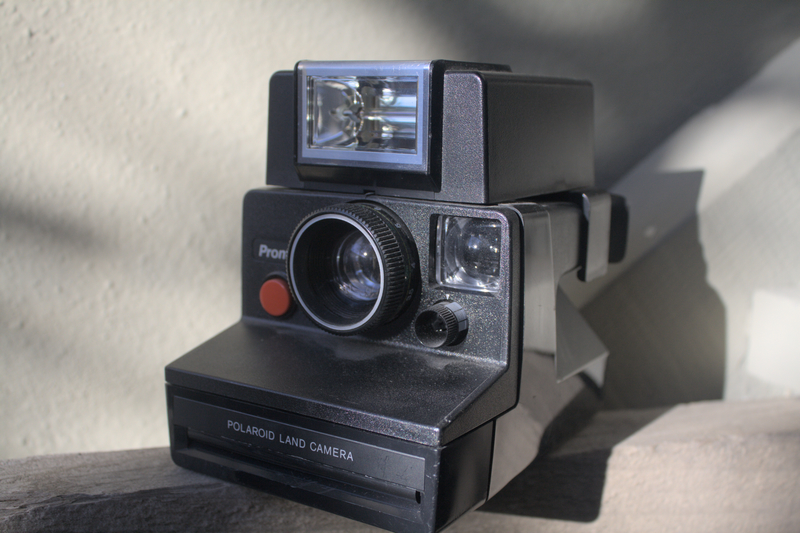
- Year: 1976
- Manufacturer: Polaroid
- Origin: USA
- Film Format: SX-70 Integral
- Lens: Polaroid 114mm f/8
- Lens Construction: 3 Elements/3 Groups
- Focus: Scale, 0.9m to Infinity
- Shutter Type: Leaf Shutter
- Shutter Speeds: 1s-1/125
- Meter: Unweighted CdS Meter
- Viewfinder: Optical Finder
- Exposure Modes: Program, Exposure Compensation
- Flash: Proprietary Flash Slot, 1/125 Sync Speed
- Battery: Integral in film packs
- Dimensions: xxmm, cm3
- Weight: 498g
This camera came from my grandpa, in a box of camera gear that he found while cleaning out his house in order to move closer to family. It sat on a shelf for a long while, at first because it smelled rather strongly after being in an attic for 3 decades, but after the smell abated, high costs of modern Polaroid film kept me from using it. Eventually though, I got curious, between the supposedly nice lens and the giant electronic flash that it came with, and payed the $20 for a pack of SX-70 film.
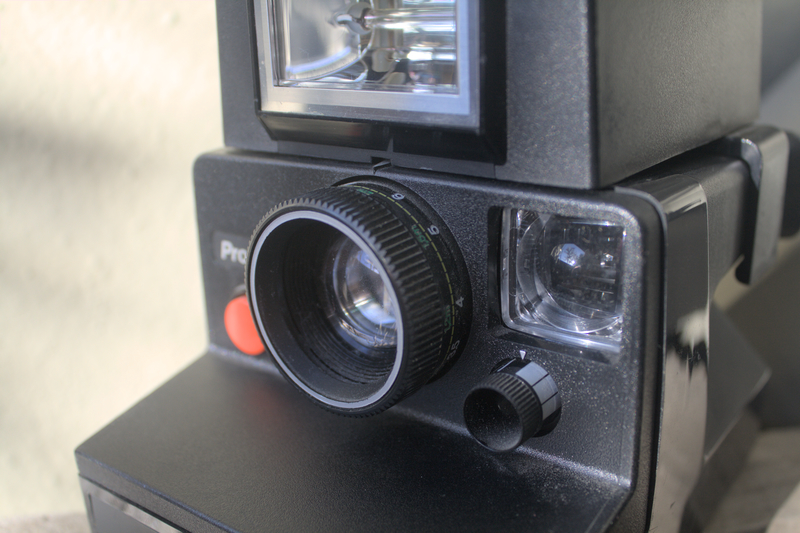
The SX-70 line was the start of Polaroid's long line of self-contained instant film. Previous instant film systems had required manual ejection from the camera after a waiting period of around one minute, then peel apart the sheet to get the print from the inside. On older cameras, you followed this up with a paint on top coat that fixed the film and protected the print from damage. This process left behind a bunch of garbage, and the resulting prints were still rather fragile, so Polaroid set out to improve upon it. The result was the SX-70 system, consisting of a folding SLR that has since become rather iconic, and matching packs of so-called integral film, containing all the needed chemicals in a small plastic bag, with a larger piece of plastic covering the entire print to negate the mess of the previous system. Integral film of various types has since become synonymous with instant photography, to the point I never realized there was anything before it until I started researching cameras on my own.
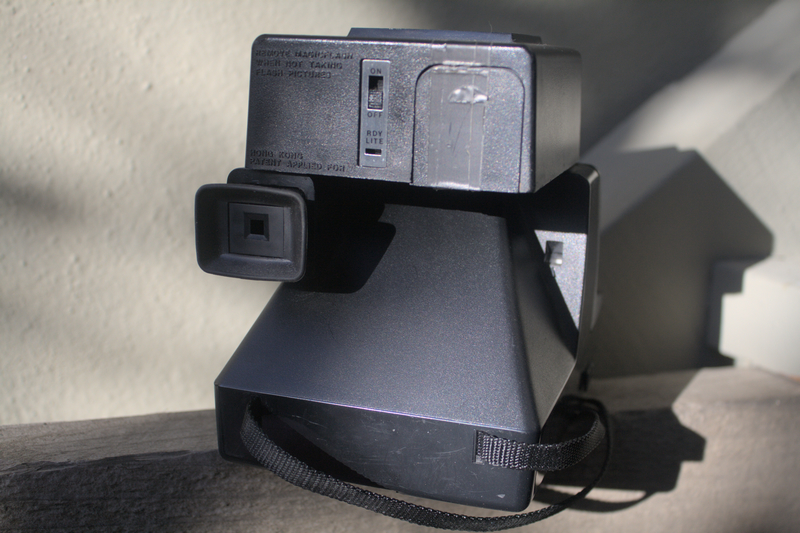
The camera itself is rather standard for non-folding Polaroid cameras from the mid-70s onward, though being the first of it's kind, I suppose it's more accurate to say it set the standard. The exterior is entirely plastic, including the lens, and contains fewer features than I expected. On the front is a large red shutter button and a exposure compensation dial, marked by white and black rectangles depending on if you want the photo darker or lighter. On top there is a small slot to insert a Polaroid flashbar, and around back there's a small window displaying the number of shots left. The lens itself is a scale focusing type, with distances from 3 feet to infinity marked in white, and metric equivalents marked smaller in green. Other than that, there's a plain optical viewfinder, and a large slot where it spits out the film, complete with the black plastic "frog tongue" which extends over the print to protect it from the sun for the first second or two. I'd kind of expected a tripod socket or possibly a self timer, but both are absent.
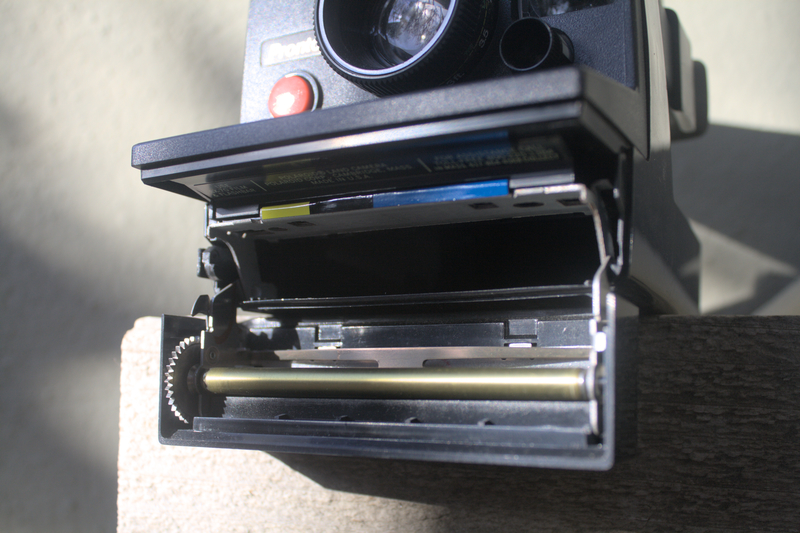
Using the camera is relatively simple, you guess at your focus distance, make sure the exposure compensation dial is where you want it, then point and shoot. If you need more light, you add a flashbar, or in my case strap on an electronic flash unit that's almost bigger than the camera itself. My unit needs to have the shutter button held down for a little bit to make sure it actually spits out the film, but I'm not sure if that's just because it's old or what. The film eject is a lot faster and more forceful than I'm used to with modern Instax cameras, but it kinda matches the loud 70s eject motor.
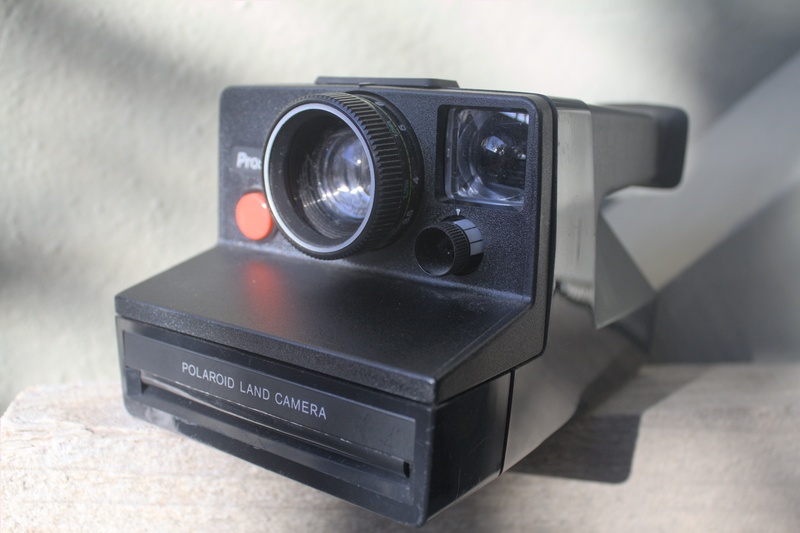
Between the shutter button and the scale focus lens, I wouldn't necessarily feel comfortable handing it to someone to take pictures of me or something, but in my own use it's not been a problem at all. My only real issue with the camera is the cost of film from Polaroid and the fact that you only get 8 shots per pack, so the exposure counter is always wrong. At least you can still get film, and Polaroid hasn't suddenly killed the line again (no, I'm still not over Spectra). It's still a fun little camera though, and definitely one that gets comments when I'm out shooting, especially with the big flash.





